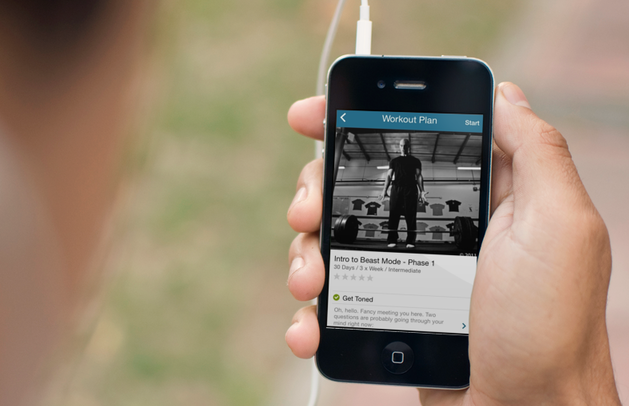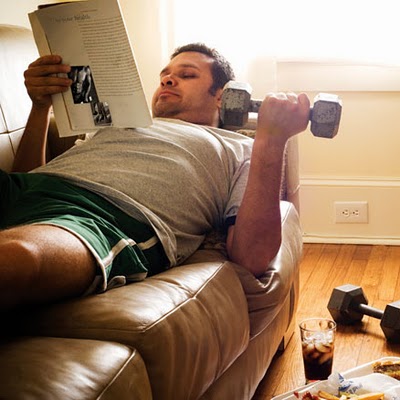The saying “if you don’t use it, you lose it” can be applied to many facets of life. Vacation time for some people applies here. Within some companies here in the U.S, if you don’t use your vacation time, you lose it.
Which is BS.
And, of course, I could easily toss in an obligatory dick joke here.
But I won’t.
Because I’m mature.
Athleticism is another one of those “things” we tend to lose when we don’t use it. In fact, I’d garner a guess that athleticism is one of the first attributes that diminishes once many of us enter into adulthood.1
But for the sake of brevity, and legally speaking, lets just say adulthood is when someone hits the age of 18.
At this age, unless you’re a high-level athlete and offered/recruited to play a sport at the next level (college), you typically either:
1. Go to college, stop playing sports, and discover beer.
2. Not go to college, stop playing sports, and get a boring desk job. Or, live in your parent’s basement and play World of Warcraft.
OR
3. If you’re me: go to college, play sports, watch way too much 90210, not hang out with chicks, stay active (even after college), still not hang out with chicks (at this point watch way too much Alias), eventually get a job in the fitness industry, get jacked, playing “sports” gets diluted to slow-pitch softball leagues, start working with high-level athletes, still stay jacked though, finally find a chick that will hang out with me, and eventually realize that, while certainly not un-athletic, I’m not close to where I once was.
That sound like you too?
Now, I’m not insinuating athleticism in this case means you’re ready to enter the NFL Combine or that you could win American Ninja Warrior.
Understandably, athleticism can mean different things to different people. But again, for the sake of brevity, lets just say athleticism can equate to the ability to do several things such as sprint, jump, hop, skip, punch a zombie in the throat, change direction, shuffle, accelerate, decelerate, and just move without looking like a drunk pirate.
IMPORTANT NOTE: Many people confuse athleticism with conditioning
And that’s not what I am referring to.
Yes, athletic drills can be a form of conditioning…however, that’s not their main objective. There’s a lot of technical proficiency and skill involved with developing specific athletic skills and athleticism in general.
Too, athleticism favors those who started at an early age. We’re motor learning sponges when we’re young. Not so much as adults when motor patterns and CNS pathways have been engrained for far too long.
Elite athletes and people who stay active their entire lives can do stuff without even thinking about it.
They can change direction on a dime or catch a frisbee with pulling a hamstring.
They can react.
They have to work at it, of course, and they’ve accumulated hours upon hours of “purposeful practice,” (in the form of actual practice and casual recreational activity) but they make athleticism look easy and seamless.
You don’t become more athletic by incessantly accumulating more and more fatigue. Mind you: the most successful athletes in the world are able to perform at a high-level – repeatedly – in the presence of fatigue. They do need to develop conditioning and endurance amongst many other abilities.
However, I feel many people operate under the assumption that conditioning (or getting tired) is equivalent to athleticism.
And it’s not.
Hitting up your local CrossFit joint is cool. I think that’s amazing. There are many amazing athletes involved with it.
But don’t assume that just because you’re completing some crazy WOD 3x per week, gasping for air by the end, and are thiiiiis close to shitting a spleen, that you’re somehow improving your athleticism.
Getting My Athleticism Back
Make no mistake: I can still move well. I haven’t turned into the Tin Man or anything (although, lets be honest: dude could dance).
I still participate in athletic endeavors and sometimes look athletic when I demonstrate exercises and drills. However, as a former athlete (and as someone who trains athletes) I’d be lying if I said I was happy with my current situation.
Slight abject disdain would seem more fitting
Which is why I was so happy to see Jen Sinkler type these words the other day:
“I missed feeling athletic in almost any situation. I missed it lot.
So, I told my friends Angie Brambley Moyer and Tim Moyer, both world-class strength-and-sport coaches, that I wanted to get it back. That I wanted to get it allllll back.
I ALSO told them that I wanted to invite others who were in the same boat — former athletes, not-yet athletes, or current athletes who wanted to level up their game — to join me in my quest.
I was positive there were others who, like me, wanted to become lean, mean, athletic machines. Again, or for the very first time.
I was right.”
I’m Not Alone!!
I think many fitness professionals feel the same way I do. We’re in an industry where we often put other’s health, well-being, and goals before our own.
Likewise, there are many people reading who, despite being former athletes themselves, don’t have as much pep in their step as they used to. Or, maybe there are some reading who have never played a sport in their life, but would like to be able to perform a pro-agility without breaking their hip?
I’m taking some initiative and putting myself through the Lighting & Thunder program. I’m even setting my ego aside and starting with the beginner program.
Here’s what I did today:
5 Yd Starts
https://www.youtube.com/watch?v=TklqD8uN_Ds
- Objective here is to drop down into a proper starting “athletic” position (weight forward, CoG low).
- Think long backside (toss back arm back as aggressively as possible)
- Push away as fast as you can (aggressive first step).
5 Yd Jog to 10 Yd Sprint (With Stop Within 10 Yds)
https://www.youtube.com/watch?v=HM-BPJKTslg
- Objective here is more or less the same as above (except without the athletic start position).
- When you transition into sprint, you should get low and have an aggressive lean with positive shin angle.
- You still want an aggressive backside.
- Also, you want to “stutter step” to a stop within 10 yds, which works on deceleration and better emulates athletic activities.
5 Yd Jog to 10 Yd Sprint (To Coast)
- I didn’t take a video of this.
- Just imagine the same video as above, except me without a shirt on or something. Or pants.
- Also, no need for aggressive deceleration…just a “coast” to finish.
Up 2, Down 1 Drill
https://www.youtube.com/watch?v=YSFDp1QSA2w
My sock game is ON-POINT!!!
- This drill helps to hammer home the start/stop/start/stop nature of athletic activities and sport.
- Performing this drill with hands touching the floor helps to cue weight forward and low (you’d obviously not do this in a REAL sport).
- Important to note that if you stop with right foot forward, you’d want to tap floor with left hand (and vice versa).
- Rest is 1:3 ratio. Rest for 3x as long as it takes to to complete the drill. This ensures ample recovery for top performance with each set.
It’s nothing fancy, but it doesn’t need to be.
I’ll be doing this program 1-2x per week all summer. If day 1 is any indication, I’m going to be Carl Lewis by September.
You Should Join Me
Lightning & Thunder is on sale now for HALf-OFF until Friday, June 3.
On top of being a top-rate speed/agility program, what’s great about it is that it can easily compliment any strength program.
It comes with a strength program in fact.
However, for those who purchase Lighting & Thunder via the links provided by the end of June 3rd, I’m going to offer you a FREE month of my Group Training Membership on Exercise.com.

NOTE: I’m only going to email the discount codes out to the exact same email address you use to purchase L&T.
You get two killer programs for one!
So, to review:
1. It was bullshit when Kelly chose Brandon over Dylan on 90210. I mean, it’s freakin Dylan McKay. How do you say no to someone like that?
2. The Lighting & Thunder program is pretty baller.
3. I’m doing the entire thing myself, even starting with the beginner program cause I’m cool like that.
4. You should totally do it with me.
5. As incentive…go HERE, and then I’ll send you a code for a FREE month in my Group Training Membership.
6. We’ll be BFFs.






